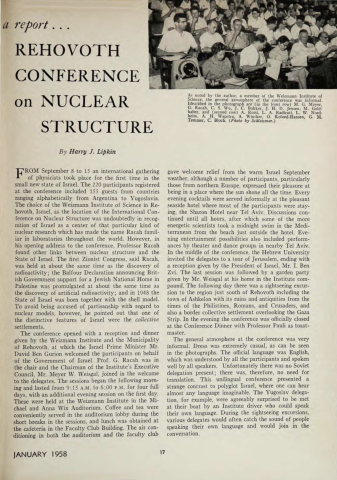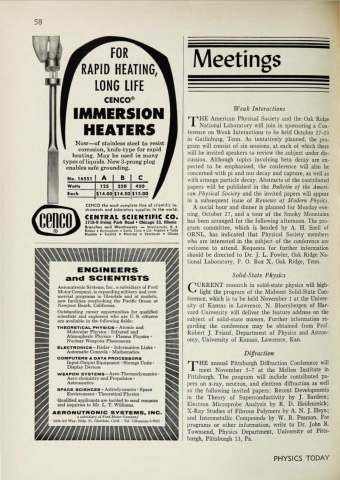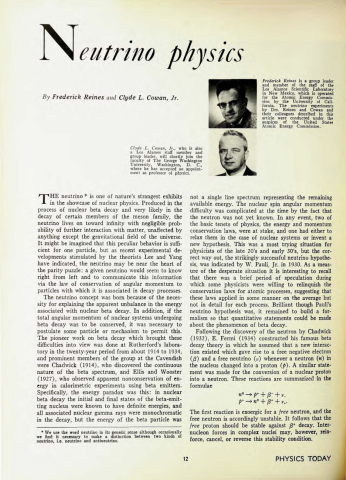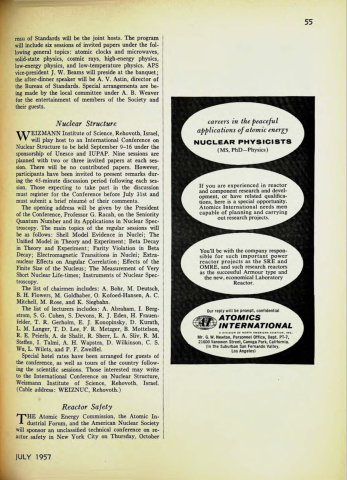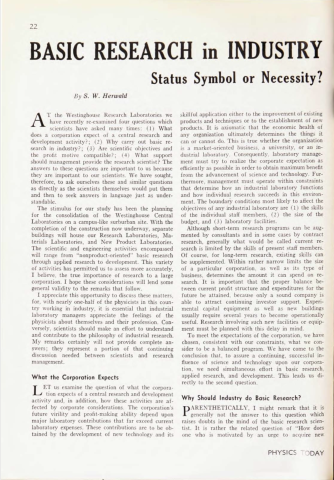Author(s)
James S. Allen and Arthur H. Snell
Publication
Physics Today
Publication Date
November 1958
Publisher
American Institute of Physics
Citation
Physics Today 11, 11, 36 (1958)
Comment(s)
Review of James Allen's 1958 book highlights his account of the beta decay experimental history.
Abstract
All physicists recognize as one of the absorbing aspects of their science the crossing and interlocking of its many threads, the appearance of basic principles in various forms when varying subjects are under scrutiny, and the diverse viewpoints from which sets of phenomena can be assessed. Take the subject of beta decay. The classical expositionary approach has been based upon the Fermi theory, with emphasis on the shape of the continuous spectrum, the allowed and forbidden transitions, the ft values, and so on, and indeed the remarkable developments of the last two or three years can be incorporated as capstones upon a structure of this kind. In Dr. Allen's book he has shown that the story can also be developed with emphasis upon the neutrino, and that such a development can be given sweep and vigor.
Excerpt(s)
Dr. Allen's treatment retains the physics of the many aspects of beta decay; the shape of the continuous spectrum (especially near its end point), angular correlations in the three-body breakup, double beta decay, decay of polarized nuclei, meson decay, helicity experiments, the nature of the basic interactions, and the universal Fermi interaction all receive discussion.
There is sufficient theory to give unity and a feeling for the objectives sought by all of the investigations, but the text is at its best when it deals with the experiments. As one reads successively about the various measurements that have informed us about the neutrino, one cannot avoid being struck by the ingenuity that has been shown. The account is in a way an incidental history of the development of laboratory skills, exemplified in the progressively increasing specificity of the experiments.
The latter have been notoriously difficult, for sundry reasons: the measurements of the upper end of the tritium spectrum were difficult because of the low energy of the particles and the fact that they vanish in intensity in the region of interest, and yet they have told us that the rest mass is less than a thousandth of that of an electron; the experiments on nuclear recoil from electron capture have been difficult because of the low energy of the recoils, with the consequence that "vacuum" sources have to be used, and yet they have been forced to such detail as a revelation of the recoil line shapes; the experiments on beta particle-recoil nucleus angular correlations have been difficult for similar reasons, and yet they have informed us about the nature of the basic interactions; the experiments on double beta decay have been difficult because of the tantalizing infrequency of the events; the radiochemical experiments have demanded the application of the finest of technique, sometimes almost on a chemical engineering scale; and (most of all) the experiments on the detection of the free neutrino have been difficult because they demanded the measurement of interaction cross sections about 10 12 times smaller than those that had previously been considered small.
It is therefore fitting that the emphasis be experimental, as it is also fitting that the story be told by one who has contributed substantially to it.

